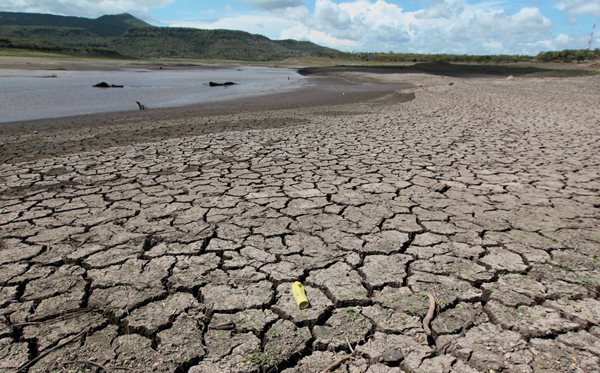
The World Food Programme warned last September that a lingering drought aggravated by climate change had put two million Central Americans at risk of food shortages.
By Fritz Lanham
Texas Climate News
Earlier this month all eyes were fixed on Washington D.C., where the immigration issue reached a rolling boil. President Donald Trump asked for $5.7 billion to build his wall along the southern U.S. border. Congress appropriated $1.375 billion. An incensed Trump signed the bill but declared a national emergency and promised to shift money from other parts of the budget to make up the difference. Opponents launched immediate legal action to stop him.
The brawl of the wall doubtless will dominate news feeds for months. But that shouldn’t elbow aside other news bearing on the larger question of climate change and its possible effects on global migration – a subject that Texas Climate News examined in detail in this 2015 article.
The issue continues to evolve, as shown by recent developments including these:
In 2017 the Trump administration eliminated Obama administration rules that called for federal agencies to consider how climate change might affect human mobility. Last month the U.S. Government Accountability Office, Congress’ watchdog agency, released a report questioning the wisdom of that action.
It found the State Department is “no longer providing missions with guidance on whether and how to include climate change risks in their integrated country strategies,” and warned, “Without clear guidance, State may miss opportunities to identify and address issues related to climate change as a potential driver of migration.”
A new study in the journal Global Environmental Change examined whether a causal link exists between climate change and patterns of migration. According to EurekAlert! science news service, researchers at Allied Systems Analysis based in Austria found “in specific circumstances the climate conditions do lead to increased migration, but indirectly, through causing conflict.”
For example, the ongoing civil war in Syria has exacerbated the effects of long-running droughts and water shortages caused by climate change. Rural populations flee to urban areas, resulting in overcrowding, unemployment and political unrest.
Study co-author Jesus Crespo Cuaresma of the Vienna University of Economics and Business told EurekAlert!: “Climate changes will not cause conflict and subsequent asylum-seeking flows everywhere. But in a context of poor governance and a medium level of democracy, severe climate conditions can create conflict over scarce resources.”
Finally, while transnational migrations tend to get the headlines, population movements within a country can have equally dramatic effects. National Geographic last month published Tim McDonnell’s lengthy examination of the challenges facing Bangladesh’s cities, particularly its capital Dhaka, as national disasters displace hundreds of thousands of people a year in one of the world’s poorest countries.
Tropical storms and dangerous flooding aren’t new to Bangladesh. What is new, McDonnell reports, is that climate change “is accelerating old forces of destruction, creating new patterns of displacement, and fueling an explosion of rapid, chaotic urbanization.”
Bangladeshi political scientist Tasneem Siddiqui told McDonnell, “People have always coped with flooding, and they have learned how to cope with death. But with climate change, many of the damages are permanent. So you have to adapt to a new way of life.”
For many migrants hope for a new life lies in Dhaka, a city of more than 10 million. “And Dhaka is collapsing,” Siddiqui said. Currently “up to 400,000 low-income migrants arrive in Dhaka every year,” McDonnell writes.
TCN’s in-depth examination of the climate-migration connection in 2015 focused mainly on Mexico and Central America. Journalists have been updating that connection lately with regard to Central America, where the World Food Programme warned last September that a lingering, years-long drought put 2 million at risk of hunger and declared that climate change was causing drier conditions in the region.
Recent reports include accounts by CNN, Time and a reporting partnership of the Marshall Project and the Weather Channel about the situation.
+++++
Fritz Lanham is the deputy editor of Texas Climate News.
